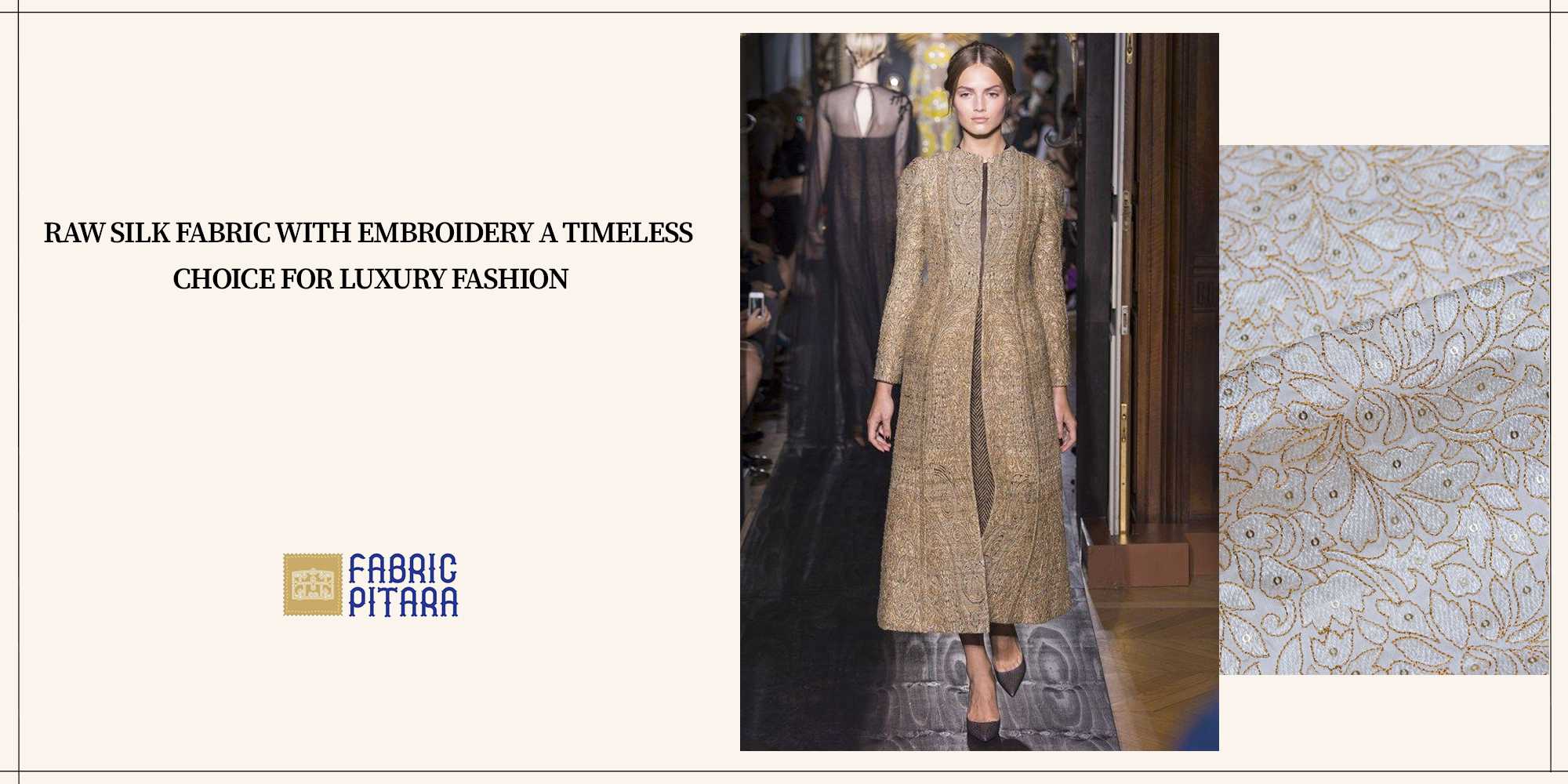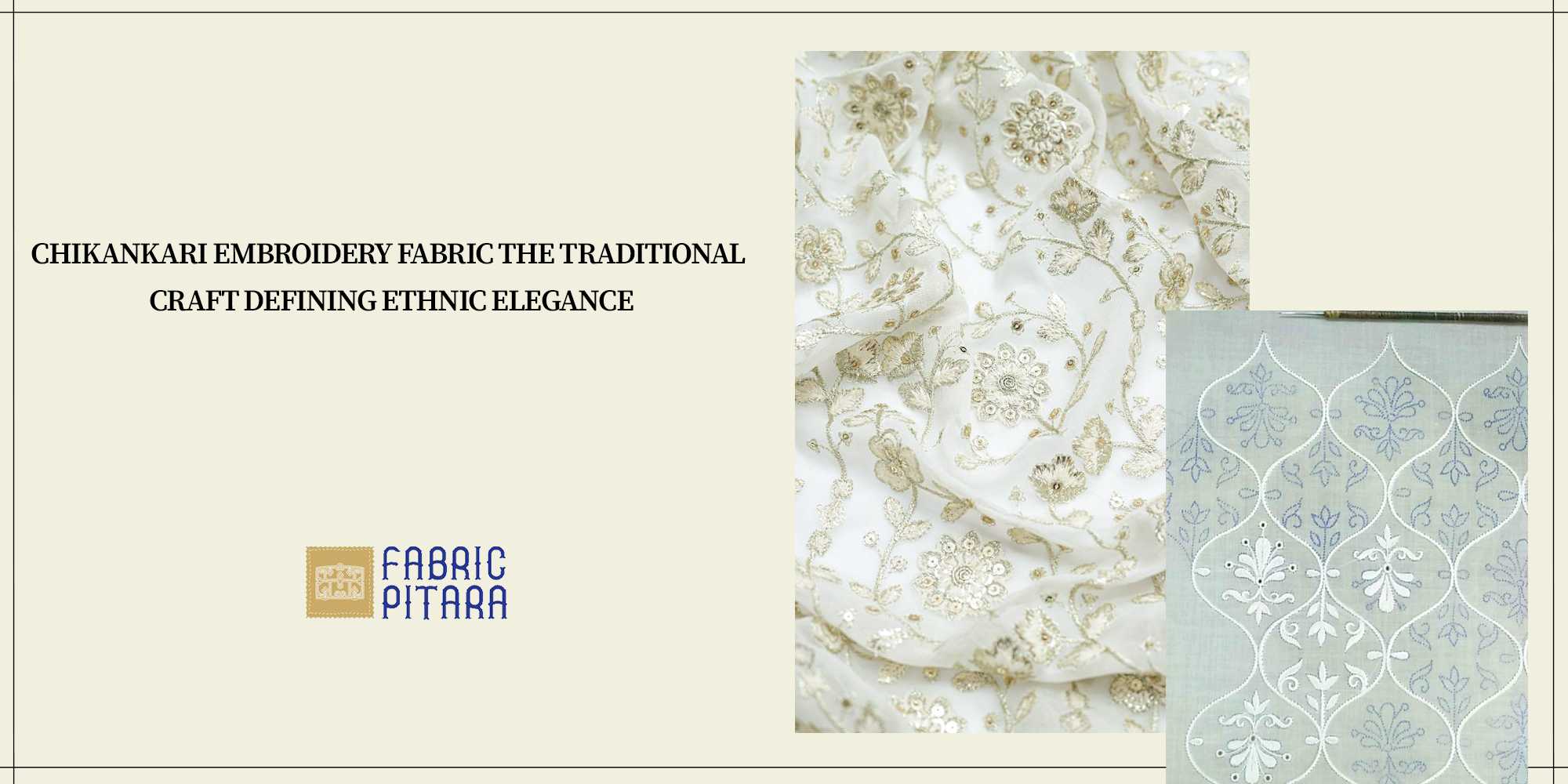![[Colorful fabric rolls display a vibrant array of diverse patterns, from abstract designs to geometric shapes, creating a visually striking textile showcase.]-[favricpitara]](https://fabricpitara.com/media/magefan_blog/A_M_C_1_.png)
American crepe cloth is a charming textile with a rich history and unique improvements inside the United States. This flexible material, recognized for its special crinkled or pebbled texture, has evolved significantly since its advent in America. This unique exploration delves into American crepe fabric's origins, evolution, and contemporary relevance, providing a complete know-how of its importance in fashion and textiles.
Early Origins:
European Beginnings
French Origins: The history of crepe fabric dates back to Europe, especially France. The French word for "curled" or "crinkled" is where the word "crêpe" originates. Through sophisticated weaving techniques and chemical treatments, crepe fabrics have historically been distinguished by their unique texture. Crepe fabric is popular for formal wear and various dress shapes because of its distinct texture.
Traditional Uses: Because of its matter, and muted appearance, the crepe was frequently associated with European mourning clothing. Due to its solemn aspect, the fabric was a good option for clothing worn during times of mourning, which was a custom that was very common in the 19th century. However, because of its adaptability and distinctive texture, crepe fabric eventually made its way into regular clothing.
Arrival in America
Introduction to the US
Cultural Integration: America first came into contact with crepe fabric in the late 19th and early 20th centuries. It was once only associated with mourning garments, but it quickly spread to other fashion domains. American textile producers experimented with various fiber compositions and weaving techniques to produce new crepe varieties as soon as they realized the possibilities of this fabric.
Early Adoption: Crepe fabric gained popularity among American designers and customers because of its versatility. It worked well for a range of outfits, from everyday dresses and blouses to formal evening gowns, thanks to its exquisite drape and distinct texture.
American Innovations
Fiber Blends: American fabric producers began making crepe material by combining special fibers like wool, and silk, and sooner or later artificial ones like polyester. More applications and styles were made possible by way of this invention. Crepe cloth's adaptability allowed it for used for an extensive range of clothing, such as ordinary dresses, blouses, and formal night robes. The use of artificial fibers expanded the material's resilience and ease of preservation, beginning it up to a larger range of customers.
Synthetic Crepe: The creation of synthetic fibers in the middle of the 20th century completely changed how crepe fabric was made. In addition to offering the same exquisite drape and feel as conventional crepe, synthetic crepe. which is frequently composed of polyester also had the advantages of greater durability, lower cost, and simpler maintenance. This development cemented crepe fabric's position in American fashion and increased its accessibility to a wider market.
![[The image features a collage of four American crepe fabrics, each with vibrant, intricate patterns in various colors]-[fabricpitara]](https://fabricpitara.com/media/wysiwyg/Brown_Aesthetic_Moment_Photo_Collage_Document_A4_Landscape_4_.jpg)
![[The image features a collage of four American crepe fabrics, each with vibrant, intricate patterns in various colors]-[fabricpitara]](https://fabricpitara.com/media/wysiwyg/Brown_Aesthetic_Moment_Photo_Collage_Document_A4_Landscape_4_.jpg)
Evolution and Popularity
Versatility in Fashion
Fashion Staples: The U.S. Fashion industry rapidly followed crepe fabric because of its versatility. Because of its remarkable drape and texture, designers found it to be the correct material for garb that stored its form and flowed fantastically. Numerous apparel portions, consisting of clothes, blouses, skirts, or even fits, were made from crepe material.
Iconic Garments: Crepe fabric was used to create many well-known outfits around the middle of the 20th century. The fabric's reputation in popular culture was further cemented when exquisite crepe gowns and dresses were frequently seen by Hollywood stars and fashion icons of the era.
Mid-20th Century Boom
Widespread Popularity: The American crepe turned into a mainstay of the style enterprise by the center of the 20th century. Its recognition became further increased with the introduction of synthetic fibers like polyester. These fibers multiplied the affordability and simplicity of care of crepe fabric, increasing its enchantment to a much broader variety of customers. During this time, geared up-to-put clothing frequently featured crepe cloth, which added to its ubiquity.
Fashion Trends: Crepe fabric saw a speedy growth in use in fashion at some point in the 1950s and 1960s. Designers including Christian Dior and Coco Chanel made crepe extra well known through demonstrating its elegance and adaptableness in their creations. Crepe fabric, which became extensively utilized in night put-ons, cocktail dresses, and tailor-made suits, came to be associated with excessive fashion.
Modern Usage
Contemporary Fashion: Crepe fabric is still popular today because of its aesthetic appeal and adaptability. It can be worn casually or formally, for elegant workplace ensembles or stylish evening wear. The fabric is a classic option in fashion because of its ability to drape gracefully and hold its texture. Crepe fabric is a material that designers are always experimenting with to create new looks that combine classic elegance and cutting-edge flair.
Sustainable Crepe Fabrics: The fashion industry placing more and more attention on the environment, and an increasing number of suppliers are creating eco-friendly crepe materials. Because crepes are more environmentally friendly and often use organic fibers and sustainable production methods, they are a more responsible choice for environmentally conscious consumers. Sustainable crepe fabrics suit the growing demand for ecologically conscious fashion by minimizing their negative effects on the environment while maintaining the same wonderful drape and feel.
![[The image showcases four American crepe fabrics with diverse, colorful patterns, highlighting their elegant drape and lightweight texture]-[fabricpitara]](https://fabricpitara.com/media/wysiwyg/Brown_Aesthetic_Moment_Photo_Collage_Document_A4_Landscape_3__1.jpg)
![[The image showcases four American crepe fabrics with diverse, colorful patterns, highlighting their elegant drape and lightweight texture]-[fabricpitara]](https://fabricpitara.com/media/wysiwyg/Brown_Aesthetic_Moment_Photo_Collage_Document_A4_Landscape_3__1.jpg)
Highlighted Points
Versatility in Fabric Blends
Silk Crepe: Silk crepe, acknowledged for its incredible drape and expensive texture, is a staple of excessive-quit style. Its natural shine and lightweight sense make it a favorite desire for evening gowns, bridal gowns, and upscale garb. Silk crepe is prized for having a smooth, mild texture and fashionable look.
Wool Crepe: Wool crepe's warm temperature and durability make it a valuable fabric for fall and winter clothing. Even though it is not much heavier than silk crepe, the fabric's smoothness and functional drape are still there. Wool crepe is a very stylish and plush fabric that is often used for dresses, skirts, and equipped suits.
Polyester Crepe: The development of synthetic fibers, like polyester, revolutionized the production of crepe fabric. Polyester crepe is more affordable, carefree, and robust than its natural counterparts. It is often used in ready-to-wear design, giving consumers a versatile and cost-effective option.
Iconic Crepe Fabric Designs
1920s Flapper Dresses: Crepe fabric had a big impact on fashion, especially in the iconic flapper attire. The rich beading and flowing, free-flowing designs of these dresses set them apart, and crepe fabric was often used for its elegant drape and movement. The use of crepe fabric in flapper dresses perfectly reflected the glamour and exhilaration of the Roaring Twenties.
Hollywood Glamour: During the 1930s and 1940s, Hollywood actresses often donned magnificent crepe gowns, which helped to establish the fabric's reputation as a symbol of sophistication and elegance. Actresses donned exquisite crepe gowns to movie premieres and red-carpet events because of its draping qualities, which made it a popular fabric.
Modern Red Carpet: Crepe fabric is still used for high-profile events and red carpets nowadays. Because of its classic appeal and adaptability, designers work with crepe to create exquisite gowns and dresses that epitomize modern elegance. Because of its elegant appearance and plush texture, crepe fabric is a favorite among celebrities and style icons.
Sustainable Crepe Fabrics
Eco-Friendly Innovations: A lot of producers are now making eco-friendly crepe fabrics because sustainability is becoming more and more important in the fashion industry. For consumers who are concerned about the environment, crepe is a more responsible option because these sustainable solutions frequently use organic fibers and environmentally favorable production techniques. Sustainable crepe materials minimize their negative effects on the environment while providing the same exquisite drape and texture, satisfying the growing demand for environmentally conscious fashion.
Organic Cotton Crepe: A well-liked sustainable choice, organic cotton crepe combines the advantages of organic farming with the distinctive texture of crepe fabric. This eco-friendly substitute offers a supple, breathable, and morally sourced fabric that can be worn with everything from casual to dressy outfits.
Recycled Crepe: Another cutting-edge sustainable fabric is recycled crepe, which is created from leftover post-consumer plastic. This eco-friendly substitute lessens the impact of plastic waste on the environment while providing the same strength and simplicity of maintenance as a conventional polyester crepe. For environmentally-conscious shoppers looking for sustainable fashion solutions, a recycled polyester crepe is a great option.
Conclusion
In the textile industry, American crepe fabric is a representation of style and adaptability. For more than a century, it has been a mainstay of fashion, renowned for its distinctive texture and lovely drape. Crepe fabric never fails to enthrall customers and inspire designers for everything from casual dresses to elegant evening gowns.
Cultural influences and artistic expressions are reflected in its rich past and contemporary appeal. Generation after generation has been influenced by the American crepe, and continued innovation has made it a vital part of American culture. The classic appeal of crepe fabric never goes out of style, whether it's used for chic outfits or eco-friendly alternatives.







